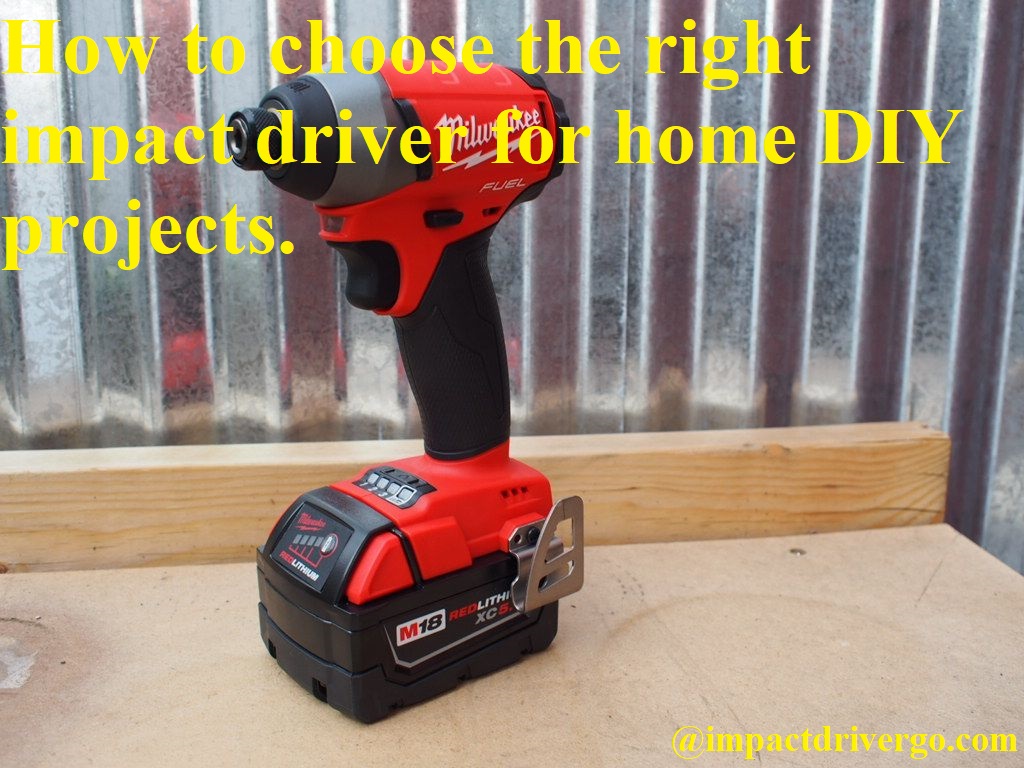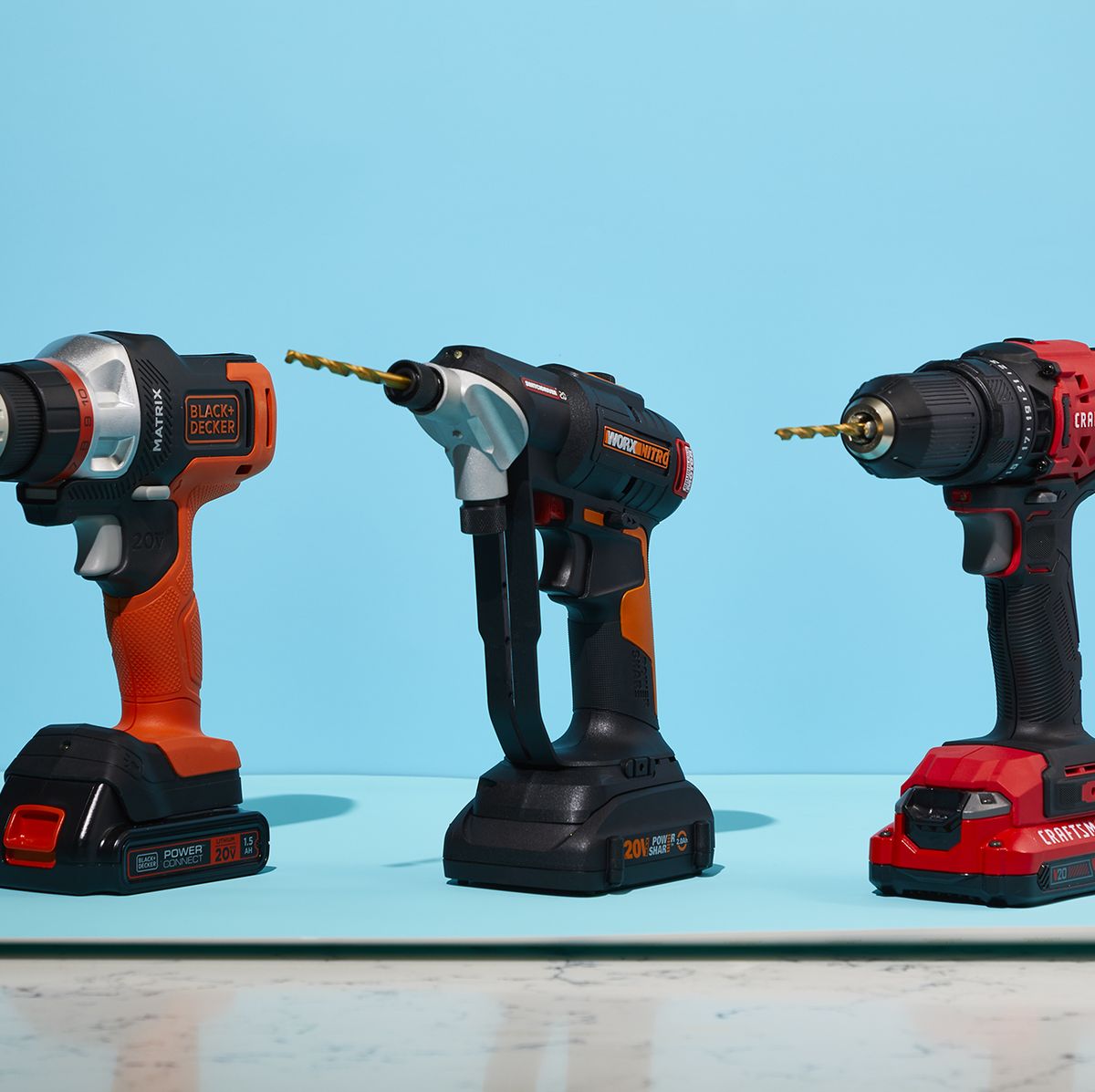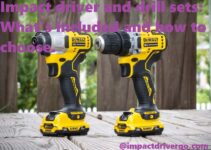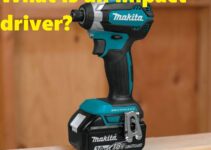Are you looking for the perfect impact driver to tackle all your home DIY projects? You’re in the right place!
This guide will help you discover what features and specs to look for in an impact driver, so you can make the right choice. From torque and speed to adaptability and durability, this comprehensive guide has it all.
So read on, and get ready to find your perfect tool!
Impact drivers are essential tools for any home DIY projects. They provide additional torque and power than regular screwdrivers and are especially useful for driving into surfaces that are hard or need more torque. They also make quick work of fastening materials such as wood, plastic, metal, and other materials.
When selecting an impact driver for home DIY projects, there are several factors you should consider: type of material you’ll be working with; size and power; features and accessories; price range; and warranty. To break these down further, let’s take a look at each one in more detail.
Definition of impact drivers
An impact driver is an invaluable tool for any home DIYer. It effectively combines a drill and a driver into one powerful tool. By combining both functions, users get the power to drive long screws and drill large holes with the same tool. Impact drivers typically have higher torque than a cordless drill and are capable of driving through harder materials, making them ideal for a variety of home improvement projects.
The key to getting the most out of your impact driver is selecting the right model for your needs. The following guide will help you learn more about these versatile tools so that you can make educated decisions when shopping for a new impact driver.
Importance of choosing the right impact driver for home DIY projects
Choosing the right impact driver for home DIY projects is an important part of any successful home improvement project. An impact driver offers improved power, speed and torque compared to a regular drill and can make light work of tight-fitting screws, bolts and nuts. They are ideal for use in hardwood, particle board, sheet metal and other materials that require a lot of force to cut or drive into.
Finding the right impact driver depends on the size of project you are undertaking and the type of materials you plan to use. Impact drivers with higher torque ratings are needed for larger projects while more lightweight models may be best for smaller projects in softwoods or plastics. It is also important to give consideration to the battery type and battery life options when choosing an impact driver as this will determine how long your tools can continue working before needing to be recharged. It’s also essential that you choose an appropriate bit set that suits the material you are working with as a mismatched bit set can cause stripped or wasted screws.
It is recommended that you read reviews from reliable publishers in order to gauge the performance levels given by different models available on the market, as well as their features, usability and price points before making your choice. Making sure you have researched thoroughly will help ensure that you select a tool which not only meets your requirements today but is suitable enough to last well into future home improvement projects too.
Factors to consider when choosing an impact driver
Whether you are a novice or an experienced DIYer, finding the right impact driver for your needs is essential for successful projects. There are a few key factors to consider when deciding on an impact driver, so that you end up with the best option for your specific requirements.
Size: The size of your given project will determine the type and size of impact driver that you require. For instance, if you have large screws or bolts to remove, then a larger tool like an industrial impact wrench is likely a better fit than a smaller handheld model. However, if you are working in small spaces where a larger tool won’t fit comfortably, then something more lightweight and compact might be the way to go.
Power: When comparing models of different bell times, check to see how much power each model offers (measured in Watts or Volts). Impact drivers come with maximum torque ratings so make sure to look up those numbers to get an idea of what the tool can handle in terms of tough materials and fastening tasks. Also remember that more powerful tools will often be heavier and more expensive than those with lower ratings – keep that in mind when shopping around.
Noise: Some impacts drivers produce less noise as they operate compared to others. If noise is an issue in your workspace or home environment, then consider models that offer lower decibel ratings (dB levels) which often equate to less noise being emitted from the toolbox during operation – again something worth researching before purchasing.
Battery: Many newer models come with rechargeable batteries which can be difficult for those on tight budgets because usually lithium-ion batteries will be pricier than battery alternatives like nickel-cadmium or alkaline batteries.. However, these newer tools tend to have longer run times and overall better performance which makes them well worth considering for DIYers who need durability and power from their impact drivers – especially if using them frequently throughout the year.
Torque
When choosing an impact driver for a home DIY project, it’s important to pay attention to its torque rating. Torque is the amount of rotational force the driver can exert on its bit. The higher the torque rating a tool has, the greater the force of pressure it can generate to drive screws into even hard materials like metal and concrete.
In general, most impact drivers should have enough torque to handle any home DIY project, such as framing a shed or assembling furniture. It’s important to consider what type of material you will be working on when choosing an impact driver so that you know if a higher torque rated model is needed.
For instance, a low torque rated impact driver may not be able to drive screws into metal or dense wood materials as effectively as one with a higher torque setting. To ensure you have the right power drills for whatever task you are trying complete, take extra care when selecting an impact driver that best suits your home DIY needs.
Speed
Speed is one of the most important considerations when choosing an impact driver, as it dictates how quickly you will be able to complete your tasks. Impact drivers are typically powered by either electric or pneumatic (air) power sources.
Electric impact drivers can offer a range of speeds from 0-3,000 rpm to 0-4,000 rpm. Electric models with higher max speeds may be better suited for those tackling more demanding tasks such as driving long screws into dense materials.
On the other hand, pneumatic options tend to offer more consistent power and are often used in professional settings due to their capacity for high speed operation and lightweight design. When choosing an impact driver with pneumatic power, it is important to consider the CFM requirement of the model as this can affect its performance when in use.
Battery life
When it comes to selecting an impact driver, battery life is one of the most important considerations. An impact driver places immense strain on battery life, and this should be taken into account when looking for one that will meet your needs.
The two main factors that influence battery life are: battery type, and voltage. Ni-Cd (Nickel Cadmium) batteries provide lower voltage but can offer a longer lifespan than Li-ion (Lithium ion) batteries which provide higher voltage but a shorter lifespan. The choice of battery type will depend entirely upon the intended use of your impact driver — if you’ll be using it regularly and heavily, then a Ni-Cd model may be preferable; but if you’ll only be using it occasionally or for light use then a Li-ion model may be suitable.
It is also important to consider the number of cells in each battery: more cells mean a more powerful motor, allowing for faster work in less time; and fewer cells mean less power but longer Run Time per charge as well as generally having lighter weight and form factor.. When looking for an impact driver with good battery life make sure you check out these specs carefully before purchase.
Size and weight
Impact drivers come in different sizes and weights, so you should start by considering the type of DIY projects that you plan to use the tool for. Impact drivers range from very lightweight to large and heavy models, so be sure to find one that is comfortable for you to handle. Smaller versions are extremely useful if you’re doing work in tight spaces while larger drivers provide more power and reach in larger spaces.
Impact drivers also come in various lengths— some as short as 6 inches and others longer than 12 inches. You should select an impact driver based on the length of time it will take for your project, as longer drivers can be harder to maneuver but may offer more stability when used with large fasteners. If you’re using a lot of shorter fasteners, then the shorter driver will often be more efficient because it can work faster without having to make multiple adjustments for each fastener.
In addition, consider the size of your current tool collection — balance between power vs comfort is key when deciding on an impact driver size that fits your needs— if you have a smaller collection of tools, then buying a heavier driver may work better for multiple projects down the line. Make sure to factor in whether or not you need additional accessories (i.e a case) when purchasing an impact driver; this may increase or decrease the total weight significantly depending on what is included with the unit itself.
Comfort and ergonomics
Comfort and ergonomics are two important considerations when choosing the right impact driver for home DIY projects. Comfort is largely determined by grip size, weight and handle design. Make sure to try out a few models and see which fits comfortably in your hands before making a buying decision.
Ergonomics are also important, as an impact driver with a well-designed handle can help reduce fatigue over longer jobs or if you’re using the tool for multiple hours at a time. Look for drivers with rubberized handles that provide good grip, even when wet or sweaty, and those that come with adjustable speed triggers so you can customize the power output for the project at hand.
Always read reviews from other customers to get an idea of how comfortable and ergonomic each driver is before making your purchase.
Price
Price is an important factor when considering which impact driver to buy. Impact drivers are typically more expensive than regular power drills, and the cost increases as the speed and torque capabilities increase. High-quality impact drivers can retail for well over $200, while economy models may be available for as little as $70.
If you’ll be completing a lot of heavy-duty projects that require driving large fasteners, then it might be worth investing in a premium product that offers higher speed and more powerful motors. On the other hand, if you don’t anticipate needing much additional power or torque, then it may make sense to look at more budget-friendly options. Taking into account the types of projects you plan to tackle will help you decide how much money to invest in an impact driver.
Types of impact drivers
When it comes to choosing the right impact driver for home DIY projects you should consider three key factors – size, power, and durability. First, it is important to consider what type of job the impact driver will be used for. Impact drivers come in three types – cordless, corded, and pneumatic.
Cordless Impact Drivers – Cordless impact drivers provide maximum mobility and convenience as they are powered by a battery pack that eliminates the need for an external power source. Most users prefer this type as it is lightweight and does not limit movement as opposed to a corded drill which may require an extension cord for use in hard-to-reach areas. However, since they are powered by a battery pack users must take into account how long the battery will last before needing to be recharged or replaced.
Corded Impact Drivers – Corded impact drivers are powered by AC (alternating current) or DC (direct current) electricity sources and typically produce greater torque when compared to its cordless counterparts. The advantage of using this type over the others lies in their continuous power provided without having to worry about running out of battery life or dealing with a misplaced charger cable.
Pneumatic Impact Drivers – Pneumatic impact drivers offer superior portability as they do not require any electrical power source as long as an air compressor is available. This type usually offers greater torque than either of its two counterparts due to their mass production capabilities when supplied with ample compressed air from large tanks connected directly from the air compressor line such that larger tasks can be completed faster than with either a corded or cordless drill depending on the strength of the compressed air source that is being used .
Corded impact drivers
Corded impact drivers require a power outlet to be used, but they deliver more torque than cordless models. They are powerful and can deliver plenty of torque for drilling or driving large screws or even removing bolts.
Corded impact drivers are typically equipped with an adjustable speed switch and come with a range of accessories including extra-long cord wraps for extended reach into tight places.
When choosing a corded impact driver, you need to consider the amp rating, speed range and type of clutch. A higher amp rating will deliver more power and enable the tool to work faster. The speed range should cover the required speeds for your project — start low so you can control the speed in order to get a snug fit without over- tighting anything. The type of clutch is important too — an adjustable clutch will give you more control when it comes to carrying out delicate tasks like screwdriving into glass or drywall, while a slip clutch is best suited for construction materials such as wood where tighter fitting is required.
You might also want to consider additional accessories such as carrying cases (for safe storage) and anti-vibration handles (to reduce fatigue).
Cordless impact drivers
Cordless impact drivers are becoming increasingly popular among home DIYers due to their versatility, incredibly powerful torque and rugged design. These impact drivers offer fast and powerful driving of screws and other fasteners into wood and concrete, making them perfect for both small indoor projects as well as larger outdoor work.
When shopping for a cordless impact driver, it’s important to consider the power requirements of the specific project. Impact drivers come in a variety of sizes and offer varying amounts of torque which affects the type of screws or fasteners that can be effectively driven into a material. Generally speaking, smaller projects such as hanging pictures or assembling furniture require less power than large construction jobs that may involve driving screws into harder materials like concrete or steel. Larger 20V or higher models are ideal for bigger tasks and will provide more power when tackling tough materials like masonry or metal studs.
The size of the drill bit is also an important factor to consider when selecting your impact driver. Different sized bits require different sizes in hexagonal shafts which can affect the tool’s performance if used incorrectly so make sure you select an impact driver that has compatible sockets with all the necessary bits you will require for your project.
Finally, battery life is an important detail to take note of since many cordless tools are powered by rechargeable lithium-ion batteries which need to be recharged regularly after various working cycles. Having multiple batteries can help extend the life of your tool across several projects without having to pause too often to recharge it in between. Consider how often you plan on using your cordless impact driver in order to decide whether longer battery life is necessary for completing all your tasks efficiently.
Conclusion
In choosing the right impact driver for your home DIY projects, you should consider the power and speed of the device, its portability, ergonomics and battery type. You should also check the reviews from professionals and experienced consumers to determine what works best for your needs.
Another important factor is cost – a higher priced tool does not always mean that it’s better – try to find something that fits comfortably within your budget. Lastly, decide on a brand – go with one you trust like DeWalt, Makita or Bosch.
Keep in mind that quality should be priority over quantity when it comes to finding the right impact driver for your DIY tasks.
FAQs
How do I choose an impact driver?
Consider the power source, torque, speed, size, and weight.
Does a home DIY need an impact driver?
It depends on the project, but an impact driver can make DIY tasks easier and faster.
How do I choose impact driver size?
Choose the size based on the type of work you will be doing and the size of the screws or bolts you will be using.
How much torque do I need in an impact driver?
It depends on the type of work you will be doing, but a minimum of 1000 in-lbs is recommended.
Do I need a regular drill if I have an impact driver?
Yes, a regular drill is still useful for drilling holes and driving screws in delicate materials.
Do I need a hammer drill if I have an impact driver?
A hammer drill is useful for drilling into masonry and concrete, while an impact driver is better for driving screws and bolts.
How strong should my impact driver be?
Choose an impact driver with at least 18V and 1000 in-lbs of torque for most tasks.
Which type of impact driver is best?
A brushless motor impact driver is more efficient and durable than a brushed motor impact driver.
What speed should I use on impact driver?
Use a slower speed for delicate materials and a faster speed for tougher materials.
What is a 1/4 inch impact driver used for?
A 1/4 inch impact driver is used for driving screws and bolts with a hexagonal head.
See Also-
- Best bit set for impact driver
- Best brushless impact driver
- Best cordless impact driver
- Best dewalt impact driver
- Best impact driver and drill set


